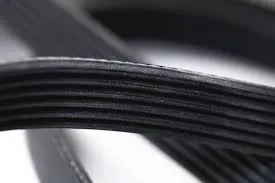- Arabic
- French
- Russian
- Spanish
- Portuguese
- Turkish
- Armenian
- English
- Albanian
- Amharic
- Azerbaijani
- Basque
- Belarusian
- Bengali
- Bosnian
- Bulgarian
- Catalan
- Cebuano
- Corsican
- Croatian
- Czech
- Danish
- Dutch
- Afrikaans
- Esperanto
- Estonian
- Finnish
- Frisian
- Galician
- Georgian
- German
- Greek
- Gujarati
- Haitian Creole
- hausa
- hawaiian
- Hebrew
- Hindi
- Miao
- Hungarian
- Icelandic
- igbo
- Indonesian
- irish
- Italian
- Japanese
- Javanese
- Kannada
- kazakh
- Khmer
- Rwandese
- Korean
- Kurdish
- Kyrgyz
- Lao
- Latin
- Latvian
- Lithuanian
- Luxembourgish
- Macedonian
- Malgashi
- Malay
- Malayalam
- Maltese
- Maori
- Marathi
- Mongolian
- Myanmar
- Nepali
- Norwegian
- Norwegian
- Occitan
- Pashto
- Persian
- Polish
- Punjabi
- Romanian
- Samoan
- Scottish Gaelic
- Serbian
- Sesotho
- Shona
- Sindhi
- Sinhala
- Slovak
- Slovenian
- Somali
- Sundanese
- Swahili
- Swedish
- Tagalog
- Tajik
- Tamil
- Tatar
- Telugu
- Thai
- Turkmen
- Ukrainian
- Urdu
- Uighur
- Uzbek
- Vietnamese
- Welsh
- Bantu
- Yiddish
- Yoruba
- Zulu
Aug . 14, 2024 01:26 Back to list
Understanding the Mechanics and Applications of Variable Belt Drive Systems in Modern Machinery
Understanding Variable Belt Drive Systems
Variable belt drives are an essential part of many mechanical systems, allowing for the transmission of power in a controlled and efficient manner. These systems are particularly popular in automotive applications, industrial machinery, and various types of automation where adaptability and efficiency are paramount. This article explores the concept of variable belt drives, their applications, advantages, and the technology behind them.
What is a Variable Belt Drive?
A variable belt drive system is designed to change the speed and torque output of a machine without the need for complex gear systems. Unlike traditional belt drives, which operate at fixed speeds, variable belt drives can adjust to different operational requirements dynamically. This is achieved through an adjustable mechanism that alters the effective diameter of the driving pulley and the driven pulley, thereby changing the gear ratio and allowing for a wide range of speed and torque outputs.
Components of Variable Belt Drive Systems
The primary components of a variable belt drive include pulleys, a belt, and an adjustable mechanism. The pulleys are typically mounted on shafts, which connect to the input and output systems. The belt, often made from durable materials such as rubber or synthetic compounds, transmits power from one pulley to another. The adjustable mechanism can vary in design; common systems utilize cones, weights, or hydraulic elements to achieve the desired change in belt tension and pulley size.
Applications of Variable Belt Drives
variable belt drive

Variable belt drives have a wide array of applications across different industries. In automotive engineering, they are commonly used in continuously variable transmissions (CVTs), which provide smooth and efficient power delivery to the wheels, optimizing fuel consumption and performance. In industrial settings, variable belt drives are implemented in conveyor systems, enabling precise speed control for transporting materials. Additionally, they are utilized in fan and pump systems, providing energy efficiency by allowing variable speed operation based on demand.
Advantages of Variable Belt Drives
One of the most significant advantages of variable belt drives is their ability to enhance energy efficiency. By allowing for a range of operational speeds, these systems can reduce power consumption when full capacity is not required. This adaptability translates into cost savings and reduced wear and tear on machinery.
Moreover, variable belt drives facilitate smoother operation compared to traditional fixed-speed systems. The seamless transition between speeds leads to less mechanical stress on components, which can prolong the lifespan of machinery.
Another notable benefit is the reduction of noise and vibration. Traditional gearing systems can generate significant noise during operation, while variable belt drives often operate more quietly, leading to a more pleasant working environment.
Conclusion
Variable belt drive systems are crucial in improving the efficiency, adaptability, and longevity of many mechanical devices. Their ability to provide a wide range of speeds and torque without the complexity of traditional gear systems makes them versatile tools in modern engineering. As industries continue to seek innovative solutions for energy efficiency and performance optimization, variable belt drives will undoubtedly remain prominent in the mechanical landscape, driving both machinery and technological progress forward.
-
Upgrade Power Steering Pump Belt for Smooth, Quiet Operation
NewsAug.27,2025
-
Precision Timing Belt & Chain: Engine Performance & Durability
NewsAug.26,2025
-
Precision Lathe Drive Belts: Durable & Reliable Performance
NewsAug.25,2025
-
84.5 Serpentine Belt: Durable & Precision Fit for Your Engine
NewsAug.24,2025
-
Premium Ribbed Drive Belts for Quiet Power Transmission
NewsAug.23,2025
-
High-Performance Vehicle Timing Belt for Engine Precision
NewsAug.22,2025

